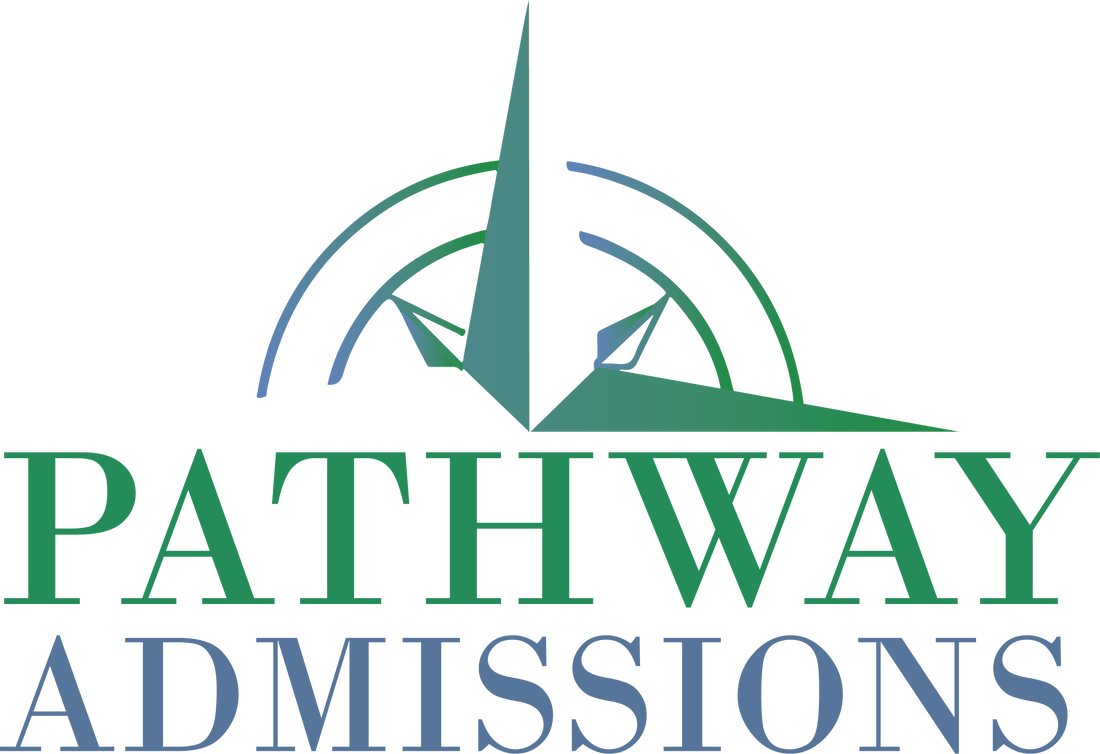|
With just under 25,000 students, Oklahoma State University has all the perks of a large Tier 1 research university while still being a manageable size. The collegial and friendly Cowboy culture is evident on campus and in the quintessential college town of Stillwater (the student body makes up more than half the town's base population). Founded in 1890 (mere months after the Oklahoma Territory land rush), Oklahoma State University prides itself on its history and its focus on fulfilling its mission as a land grand institution. Nearly 30% of undergraduate students hail from outside Oklahoma. Oklahoma State University students can pursue more than 250 majors and enjoy a favorable faculty-student ratio (with an average class size of 32 students). OSU does not offer a structured exploratory studies program geared toward students who have not yet settled on a major, but students can apply as undeclared and receive special academic advising to help them identify their strengths and interests. OSU offers students significant tools to ensure academic success -- the Lasso Center offers free one-on-one tutoring in academic subjects (as well as peer tutoring options and executive functioning and academic success coaching), the OSU Writing Center provides writing support services across disciplines, and the Mathematics Learning Success Center offers all OSU students free tutoring in lower-level math courses (as well as some selected upper-division courses). The OSU Honors College benefits include priority registration, small discussion-based classes, dedicated academic advising, access to honors-only facilities such as computer labs, and the option to live in honors housing. OSU undergraduate students frequently find opportunities to pursue research (even outside the STEM fields), and the Freshman Research Scholars program provides $1,000 grants to freshman who are eager to dive into research opportunities (the application is inside the portal and the deadline for consideration is February 1st). The Riata Center for Innovation & Entrepreneurship is housed within the Spears School of Business, but is open to all students across the campus. 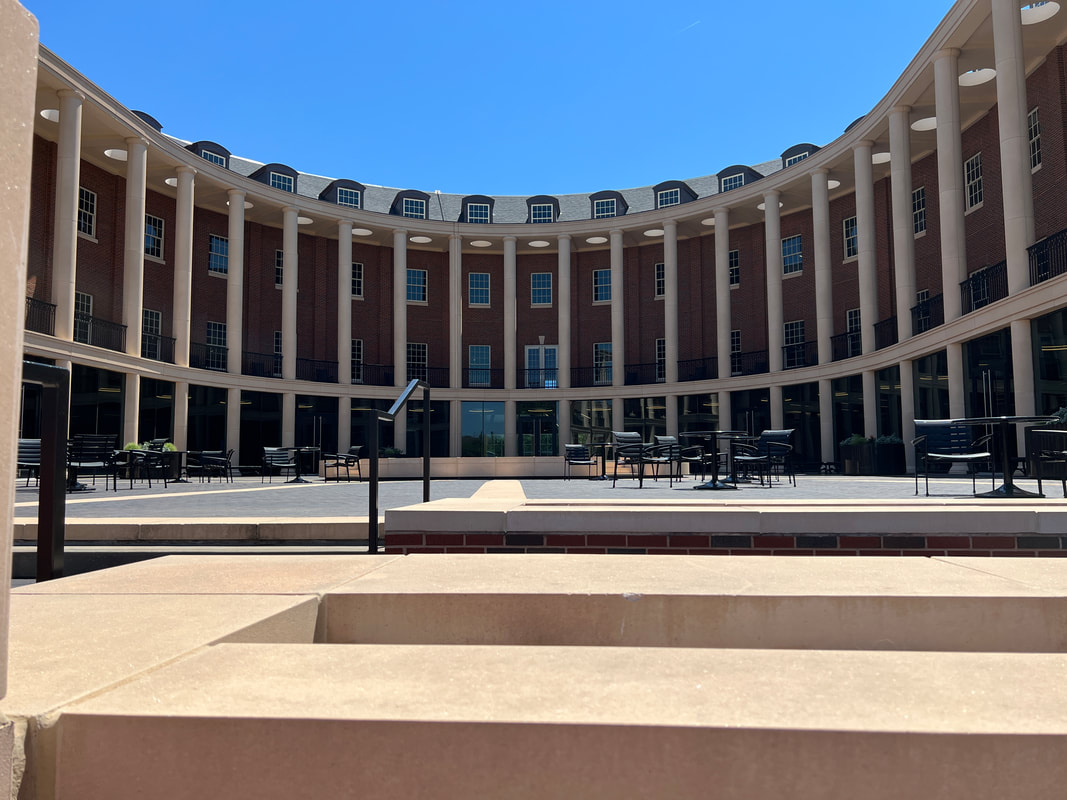 Spears School of Business (opened 2018) Spears School of Business (opened 2018) OSU's merit scholarships are generous, even for students with a more average academic profile. Many students will receive enough scholarship aid to reduce or eliminate the out-of-state tuition differential. High achieving nonresident applicants are also eligible to be nominated by OSU admissions to receive the OSHRE scholarship ($15,520 for up to 5 years which defrays the out-of-state tuition entirely, plus $3,200 to put toward housing, books, and other expenses). Housing options include traditional shared and single rooms, furnished suite-style living, with and without shared living rooms. Students interested in a single bedroom can opt for a private room in the traditional dorms or one of several single bedroom configurations available in the suite-style and apartment housing. Though OSU lacks a central dining hall, the meal choices are abundant, with everything from national franchises to local favorites on the menu (meal cards allow students to swipe their card at any available campus dining option). Our tour guide advised that the bronze meal plan is more than enough for the vast majority of students.  OSU's storied Boone Pickens Stadium (as seen from campus) OSU's storied Boone Pickens Stadium (as seen from campus) OSU sports are highly competitive on the national stage -- the Cowboys are justly proud of their 52 NCAA national championship titles. Game days are a big deal in Stillwater, and OSU boasts "America's Greatest Homecoming" (crowds of alumni and family easily triple Stillwater's population during Homecoming week). Club and intramural sports offer students considerable opportunities for athletic pursuits outside of the many NCAA D1 sports. The campus recreation center includes an indoor track, rock-climbing wall, outdoor pools, basketball and racquetball courts, as well as state-of-the-art weight training and cardio equipment. While options are abundant, only 20% of students participate in Greek life. Students can also participate in more than 500 student clubs and other organizations. Students interested in pursing an aviation major (professional flight, aviation management, or aerospace security) will enjoy OSU's new state-of-the-art flight facility (opened 2022) and its top-notch fleet. Offering FAA-approved Part 141 training, OSU's students are eligible for the reduced 1,000 hours benefit under R-ATP.
Oklahoma State University offers a broad range of opportunities and experiences (and at an affordable price).
0 Comments
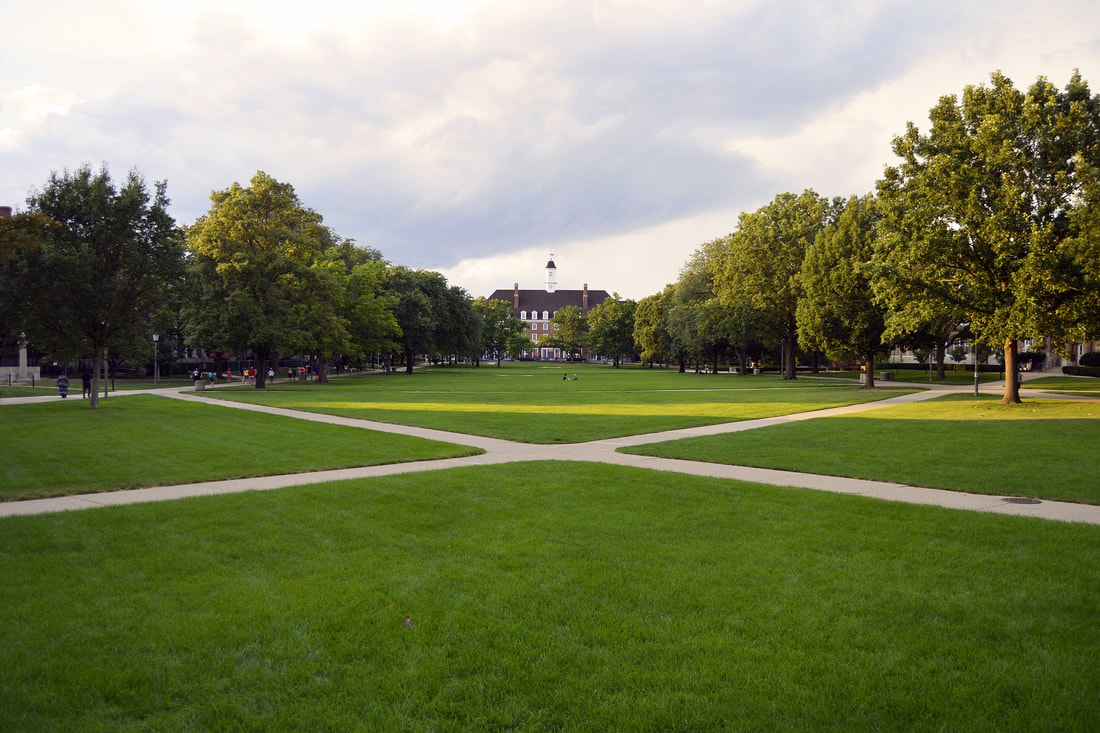 As juniors begin to build or finalize their college lists this spring and the air is filled with chatter from seniors and their families about college admissions outcomes, it's a good time to remind students and parents that many times a decision has absolutely nothing to do with what the student did or didn't do. That's right -- it's mostly not about YOU, it's about THEM. It's about the colleges and what they need and/or want. There are some factors that are definitely within the control of a student -- the rigor of the courses you took, the grades you earned, the test scores you achieved, the activities you led or participated in, the hobbies and interests you pursued, the focus you applied to selecting a balanced list of colleges to apply to, the care you took to select a teacher who would be likely to write you a great letter of recommendation, the effort you put into crafting a strong college resumé and compelling application essays, and the time you devoted to visiting and/or interacting with your top choice colleges. But even doing all of that may not be enough for every college on your list, and that's neither your fault nor within your control. COLLEGES ARE A BUSINESS It's important to never lose sight of the reality that colleges operate with both a mission . . . and a bottom line. And like any business, the bottom line is always top of mind. Many colleges need a certain percentage of "full-pay" students in any given year. Some public state universities are subject to ever-shifting funding priorities at the state legislative level. Some small private colleges may be mindful that they are only a few missteps from financial insolvency. Most colleges suffered some financial losses during the pandemic. Enrollment management for colleges is its own industry. Many colleges employ enrollment managers and consultants who use algorithms and other methods to try and pinpoint that sweet spot where they've accurately predicted how many students they need to offer admission to in order to yield the size class they can comfortably house and educate. There are only so many dorm rooms (the University of Tampa is a good example of a school that completely misjudged their housing parameters, which was a mess for them and for the students who scrambled to find apartments), and overcrowded classrooms will also not be popular with students, faculty, or alumni. Some colleges over-enrolled (or under-enrolled) during the pandemic years and will be adjusting course to correct for those issues. And speaking of enrollment management, one of the tools that colleges are increasingly using to manage their yield (percentage of accepted applicants that say "yes" to the offer) is early decision or ED. Some colleges offer ED and early action (EA), some colleges offer ED1 and ED2 (two cycles of early decision) -- but in either case, they are using ED to fill a successively larger chunk of their classes. Many colleges will fill 50% of their class through ED, and we are hearing some colleges are filling as much as 75% with ED applicants. This is yet another factor that makes it very difficult for a student to receive an offer of admission in the regular decision round. INCREASING APPLICATIONS: VICIOUS CYCLE As more colleges join the CommonApp each year, it has become easier for students to apply to more colleges. The pandemic introduced another element with most colleges offering test-optional admissions for at least 1-3 years. Many students adopted a "why not apply and see" attitude once the test score component was no longer part of the equation. These are but two of the factors that have led to many colleges experiencing skyrocketing application numbers. Colleges still have mostly the same number of seats per class to offer, so as application numbers rise, their acceptance rate goes down. The lower the acceptance rate, the more "selective" a college appears (and the better their rank on the various rankings list will be), which in turn fuels ever-escalating rates of application. As acceptance rates trend down at so many colleges, many students panic and increase the number of applications they submit, and so it goes. BUILDING A CLASS Selective colleges could fill their class ten times over with amazing and accomplished students. Most applicants at these colleges have perfect grades and test scores. There are nearly 27,000 high schools in the US, and the valedictorians from those schools won't all gain admission to selective universities. No college -- not even an Ivy League institution -- wants a class comprised solely of valedictorians and salutatorians. Every college wants to enroll a diverse class, with students from a variety of backgrounds and who bring diverse viewpoints to conversations in and out of the classroom.
The other variables -- the ones that are absolutely not within your control and change from one year to the next for any given college -- are institutional priorities.
There are probably dozens of other factors that contribute to admissions outcomes. But all you, the student, can do is put your best foot forward, apply to a balanced list of colleges so that you have good choices, and don't focus too heavily on any one college or type of college. Colleges are building a class and are juggling a host of competing and possibly incongruent goals and objectives. At the end of the day, remember, it's not a personal rejection -- it's not about YOU, it's that myriad of shifting priorities of the college in any given year. You will thrive and be successful wherever you end up! The waitlist: one of the least understood (and least fun) places to be. For students, it feels like limbo. Here are some answers to common questions about the waitlist.
Do I Still Have A Chance? Understandably, this is the first question I often get asked by both students and parents. The answer is yes...sort of. Technically, there's definitely still a chance you could get into the school, but many schools waitlist hundreds or even thousands of students, and take fewer than fifty from that number. Some schools, depending on the year, don't go to their waitlist at all! As an example, in 2020, Cornell waitlisted 6,750 potential members of the class of 2025, and admitted just 190 of those. To look at a somewhat less selective institution, SMU waitlisted 2,043 in the same year, and eventually admitted 340 of those people. So, there's a chance. But the fact is that most selective--especially highly selective--institutions waitlist thousands more people than they will admit. What Should I Do? If you want to stay on the waitlist, you should be able to indicate this in your portal, and should do so as early as possible. Many schools will give you instructions about how to proceed: if they do, follow the instructions you're given! They may be looking for an additional piece of writing. If so, include any updates as to your achievements or grades as well as information about what you like about the school. If you would definitely enroll if admitted, make sure you say that--it's probably your most powerful card to play. Be sure you're following the college's instructions perfectly--if they indicate they'll accept more letters of recommendation ,provide them....but otherwise, don't do so. You don't want to give them material they don't want. Make sure that whatever you do submit isn't just a generic statement of interest, but truly personalized to the college. Think of this as your last chance to sell them not just on the idea that you love the school, but that you're a great fit. How will you contribute to campus? What activities might you get involved in? These are questions to answer in your letter of continued interest. Who Gets In? The answer to this question varies, but there are some constants. First, unfortunately, the answer is "not many people." The best thing you can do, in fact, is get excited about the places that have admitted you. Students should assume they're not going to get off any given waitlist, no matter how great a fit they are. This includes students with a legacy connection to the school: sometimes, legacies are waitlisted because it's considered a "soft" rejection, or a kind way to say no. Most waitlists aren't ranked, so it really depends on who accepts their offers of admission. Remember that institutional priorities for most schools are about building a well-rounded class, and the waitlist is simply a tool by which colleges and universities can ensure that they're able to do that. That being said, students who are more likely to deposit are more likely to get in. In most cases, those will be students who can afford to pay for a school without scholarship money. While it's not entirely unheard of to get scholarship money coming off a waitlist, it is exceedingly rare. Most of the students coming off waitlists are full pay, meaning that they don't need any financial aid or merit money to make the school work for them financially. You should also keep in mind that you may not hear from a waitlist until summer. Most notifications are rolling. If you want to pursue a waitlist, make sure you deposit elsewhere by May 1, so that you definitely have an option if the waitlist doesn't work out. If you get accepted from the waitlist, you can forfeit your deposit at the other school. Ultimately, whether to pursue a waitlist is a decision for each student and their family, and our students have certainly come off waitlists to have wonderful experiences at Duke, UC Berkeley, and dozens of other institutions at all levels of selectivity. But students should prioritize the schools that have accepted them as they're working toward making college decisions. Those are places that want you and are prioritizing you...and every student deserves to be someplace that wants them! The SAT and ACT are an intimidating part of the college process for most students, and the fact is that even in today's test-optional era, many students are still applying with scores. While every student is different and testing is by no means needed for everyone, for students applying to selective schools it may still be a good idea, depending on a number of factors.
But once you've decided to test, what then? How do you pick which test to take, and how do you prep? Here are a few thoughts (and please note that this info applies to the classes of 2023 and 2024--past that, you're dealing with the new SAT, which will be it's own post when we know more.) What are these tests for, anyway? The SAT and ACT both purport to measure college readiness...but they don't. Study after study shows that these tests don't correlate to your high school grades, how well you do in college, or what content you know. (In fact, SAT used to stand for Scholastic Aptitude Test...but they don't use that language anymore because it is proven to not be a great measure of aptitude!) Instead, think of them as admissions officers do: a tool that allows them to compare students across contexts. For example, students from two different high schools in two districts in different states may both have taken a class called "Algebra II." But is the curriculum and the level of material the same at those two schools? Did they absorb the same content? Standardized tests are an additional point of comparison besides grades. Which Should I Take? Good news! You can take either test--no college cares which you submit (although policies vary as to whether or not schools superscore, taking the highest test sections even from different sittings, or not.) You also have control over who sees your scores and which they see: except for just one or two schools, you get to pick which scores and which tests to send for consideration as part of your application. Which Test is Better for Me? The two tests take different approaches. One of the best ways to determine which might be better for you is to take an ACT practice (or the Pre-ACT, if it's available to you) and compare that to an SAT practice or PSAT scores. About 30% of students do much better on one test or the other (sometimes a difference of more than 100 SAT points of improvement simply from picking the right test!). Careful test selection is key, especially since most kids don't benefit from splitting their energy to prep for two exams. I'm always happy to chat about the right test for any particular student or to provide, score, and analyze a practice exam of either type, but understanding some of the key differences between the tests is a great first step for both parents and students. Click the button below to download a handy comparison chart. It covers everything from structure and timing to scoring and content. As the ApplyTexas application portal went live early Sunday morning, students and counselors in Texas learned that Texas A&M will now require students to respond to the diversity essay prompt that was optional last year and respond to two new short answer prompts.
DIVERSITY ESSAY (250-300 words) Again, though this was an optional prompt last year, it is now required. Texas A&M believes that diversity is an important part of academic excellence and that it is essential to living our core values. Describe the benefits of diversity and inclusion for you personally and for the Texas A&M community. In answering this prompt, consider your own personal diversity and/or your commitment to promoting and living in a diverse and inclusive community. You should also note that diversity is not limited to ethnicity, religion, gender, sexual orientation, or socioeconomic factors. You are unique and should feel free to use this space to spotlight your own interests, talents, perspective, background, family, and experiences. If you lived overseas or speak more than one language, that's worth highlighting. Maybe you have a unique hobby that isn't yet represented in a club on campus. Don't forget that you also want to link your diversity of lived experience to Texas A&M and the greater Aggie community. Texas A&M's core values are: excellence, integrity, leadership, loyalty, respect, and selfless service. Respect in particular might be a good focal point for your essay -- for respect for others and differences is a key underpinning of inclusion and commitment to diversity. SHORT ANSWER PROMPTS (200-300 words) Again, these are new to the 2022 cycle! 1. Describe a life event which you feel has prepared you to be successful in college. This is asking you to reflect on and relate some specific event that will help you be successful as a college student. This could be something academic - perhaps poor performance on a final exam caused you to reexamine your study skills or time management. Or it could be something you learned about yourself in a sports competition or another extracurricular activity. Maybe your performance dipped below your expectations, and you gradually realized that you needed to refocus your attention or energy to that activity in order to improve your results. Or your summer job may have helped you understand responsibility in a new way. This is a broad prompt and a short answer, so don't over-think it. Relating one experience or event, the lessons you learned, and how those lessons correlate to success is a good strategy. 2. Tell us about a person who has most impacted your life and why. This one is a little more clear-cut. You can choose a national or international celebrity or public figure, an author or musician, a social media influencer, a family member, teacher, friend - you name it. Again, you only have 200-300 words, so there's no need to try to give the individual's life history. Keep the focus on YOU and explain how and why that person affected your life.
 Willamette University (pronounced "Will-AM-It") is a nationally ranked liberal arts college (peer institutions in the Pacific Northwest include Lewis & Clark College, University of Puget Sound, and Whitman College). Willamette believes that its undergraduate liberal arts students benefit from lessons or courses taught by Willamette's law school and Atkinson Graduate School of Management MBA faculty. One of the signature undergraduate programs -- Politics, Policy, Law, and Ethics (PPLE) -- benefits significantly from the involvement of Willamette's law and graduate faculty. Undergraduate and graduate faculty team up to teach many of the data science courses, and Willamette also offers a 4-year B.S./M.S. in Data Science. The Pacific Northwest College of Art in Portland will become part of Willamette in 2021-22, and students will be permitted to cross-register for courses. Tokyo International University of America is situated on the Willamette campus, and students in each program are able to take joint courses. With its proximity to the state capitol, students find many opportunities for internships. The university motto -- "Not unto ourselves alone are we born" -- underpins the institutional philosophy of encouraging students to better the world and be active contributing members of the community as Willamette graduates. Students log more than 70,000 hours of community service through Willamette each year. Willamette has a very strong and healthy endowment, allowing the institution to weather the pandemic with minimal disruptions. It offers generous financial aid packages -- both in the form of merit and needs-based aid. Willamette prides itself on the diversity of its student body and on its performance on social mobility indices (it touts a large number -- typically 25% of each undergraduate class -- of first-generation students). The strongest programs include the PPLE major mentioned above, Data Science, Theater, Sustainability & Environmental Science, Japanese (both language and cultural studies), Biology, History, and Economics. In addition to the 4-year BS/MS in Data Science, students may also pursue a 3-2 MBA degree, 3-3 law degree, or a 3-2 engineering program (Columbia, USC, and Washington University are the partner institutions for this program). Students are enthusiastic about Willamette for many reasons -- not least of which are the strong relationships undergraduates are able to build with faculty members. Classes are small (76% have 20 or fewer students), and faculty are accessible, both for on- and off-campus interaction with students. The student body is friendly and collaborative, and many enjoy the varied outdoor opportunities available in Oregon and near the campus. Willamette owns a 305-acre Forest at Zena situated within a ten minute drive of campus that is often used for recreational activities as well as field studies and other classroom pursuits. Students highly rate Willamette's support services, particularly the free tutoring in all subjects and other academic supports as well as the university's commitment of resources to mental health counseling and resources. What's the SameAll students applying to UT Austin must write ApplyTexas' Essay A, which asks them to tell their story, including but not limited to challenges or experiences that have shaped them. Applicants to UT must also complete four short answer questions, each of which should be about 200-300 words. Aim for 250, but don't worry if you're a little under or over; our students have had successful admissions results with shorter or longer answers, and it's really more about content than length. Think quality, not quantity! The first prompt remains the same. Why are you interested in the major you indicated as your first-choice major? It's all about specificity here. For better or worse, UT is one of the few schools in the country that admits almost entirely by major, which means that the fit for your intended major is especially important. Even if you're an auto admit because of class rank, you're not guaranteed to get your preferred major or even school within UT, so this prompt is a big deal for all applicants. Use the space to highlight any experiences you've had, classes you've taken, or activities you've pursued that relate to your major, and don't be afraid to explain how seemingly unrelated items from your resume have prepared you for your future or might transfer to your field. A short anecdote about how you developed this interest is also welcome. Secondly, connect this to UT: you shouldn't think of this prompt just as "why this major" but as "why this major AT THIS SCHOOL." What does UT specifically offer that no other school does? Why is it your top choice? What professors might you do research with, classes might you take, or opportunities would you take advantage of? This is the place to tell your admissions reader! The COVID-19/additional information prompt from last year remains the same, as well. *Initially, we thought this prompt was optional this year: all indications are that it is REQUIRED and this post has been updated the reflect that information. Please share background on events or special circumstances that you feel may have impacted your high school academic performance, including the possible effects of COVID-19. Last year this prompt was optional, but it is required this year. If you have something substantive to say or something you need to explain, like a drop in grades or bad performance in a particular class, this is the place to do it, whether or not it had to do with COVID. Focus on a quick, factual explanation of what happened and what skills you've developed such that it won't happen again, whether that's better study routines or the addition of medical treatment. If you don't have anything to explain, the best course of action is to think about ways COVID might have impacted your academic performance even if they're not reflected on your transcript, for better or worse. It isn't the place to slide in an extra essay about how COVID taught you to be grateful for what you have, for example, and you won't be doing yourself any favors by giving your reader something they didn't ask for. However, if you took the time to explore an additional academic interest, you could discuss that here. If you didn't bond as much as you wanted with your teachers (meaning that one of your recommendations comes from sophomore or even freshman year as opposed to the more typical and optimal junior year teachers), that's also something you could explain in this space. For those who truly have nothing of the kind to say, don't forget that not everything that impacts your performance is visible on your transcript! If you work incredibly hard for your grades because of a learning difference, or if you feel that you would have had different academic experiences but for scheduling constraints at your school or with activities, those are also things that could go here! What's differentThe second prompt is similar to what was there in past, but newly worded to give more scope to more students, so we love this change!
Describe how your experiences, perspectives, talents, and/or your involvement in leadership activities (at your school, job, community, or within your family) will help you to make an impact both in and out of the classroom while enrolled at UT? This prompt used to be purely about leadership, but this rewrite is an amalgamation with the old third prompt (which invited students to comment on how their perspective or experiences might enrich the environment on campus.) It allows students with strong leadership experience to highlight it, but don't feel limited to conventional positions like "President" or "Team Captain." The admissions office is just as interested in hearing about unconventional or unofficial ways you've displayed leadership traits or ways in which your experiences or perspective are different from those of others. Our advice is to think of a trait or two you'd like to highlight, and tell a story or two to do so. Make it clear why you feel the trait you're highlighting is an important one and how it would enrich the school or make an impact...but don't feel it has to fall into the traditional definition of leadership or involvement. Relatedly, don't forget that they're already seeing your resume (and the UT resume is a whole separate post!) The activity or experience you discuss here may appear there, but bring something new. Avoid repeating your bullet points, and try to highlight something different than you did in your Essay A or in the other short answer prompts. The new third prompt is an interesting one. The core purpose of the University of Texas at Austin is "To Transform Lives for the Benefit of Society." Please share how you believe your experience at UT-Austin will prepare you to "Change the World" after you graduate. Whew, this a lofty question! It's a combination of a standard "Why this school?" with some other elements. As with the other questions, specificity is key: what, specifically, do you see yourself doing in ten years, and how will UT--better than another school--prepare you to do this? Students who don't know exactly what they want to do may want to take this space to talk a bit about what their definition of a good education is (Well-rounded? Turning you into a writer? A critical thinker? These are all possibilities!) and how UT will provide such an education. Note the slight social justice orientation of the question, too. Whether or not you're intrinsically interested in service or social change, UT is pointing toward students making an impact beyond themselves, and you would be best served by an answer that takes this into account in some way, whether it's within your future career or your personal life. But don't be worried if your career plans don't have a charitable bent--there are a lot of ways to "change the world," so interpret the question in a way that works for you! |
Archives
July 2022
Categories
All
|



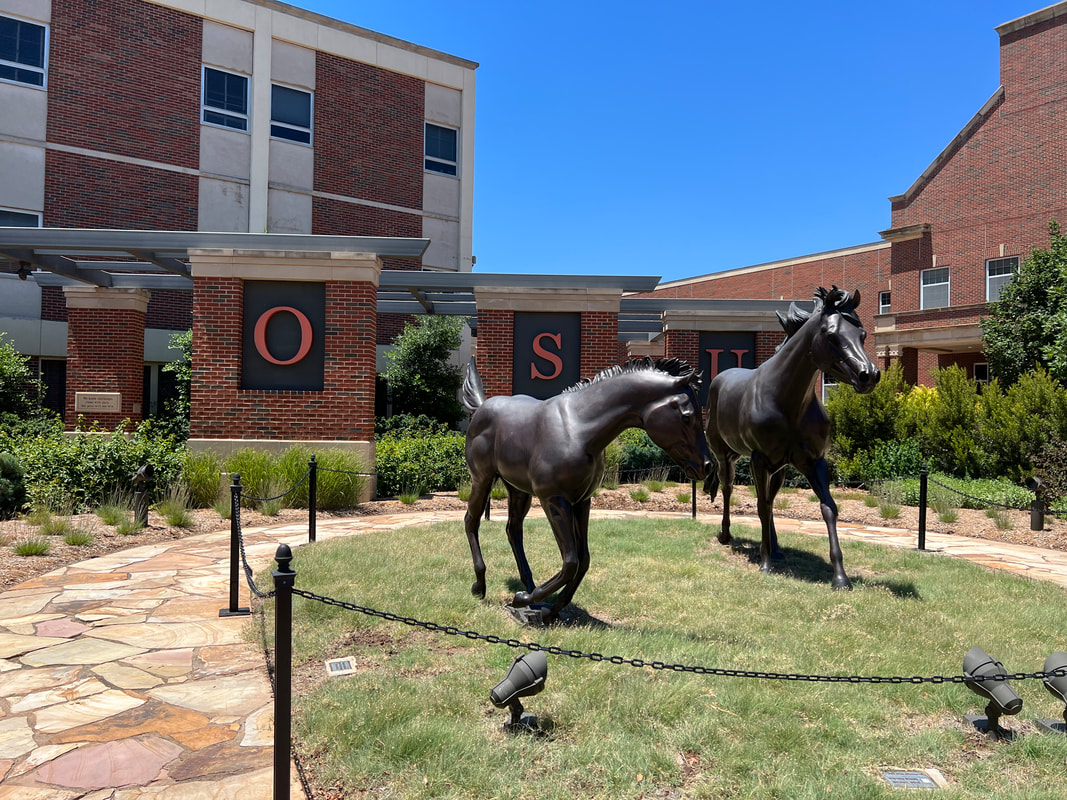


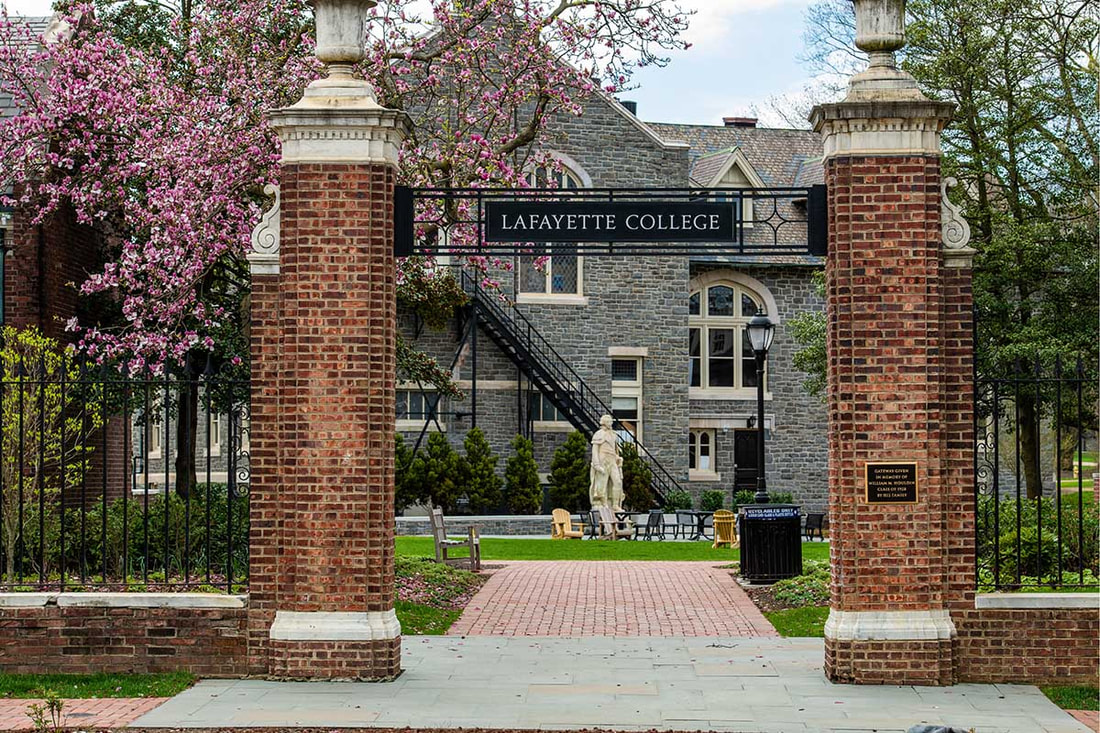
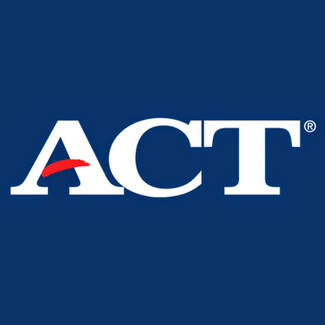
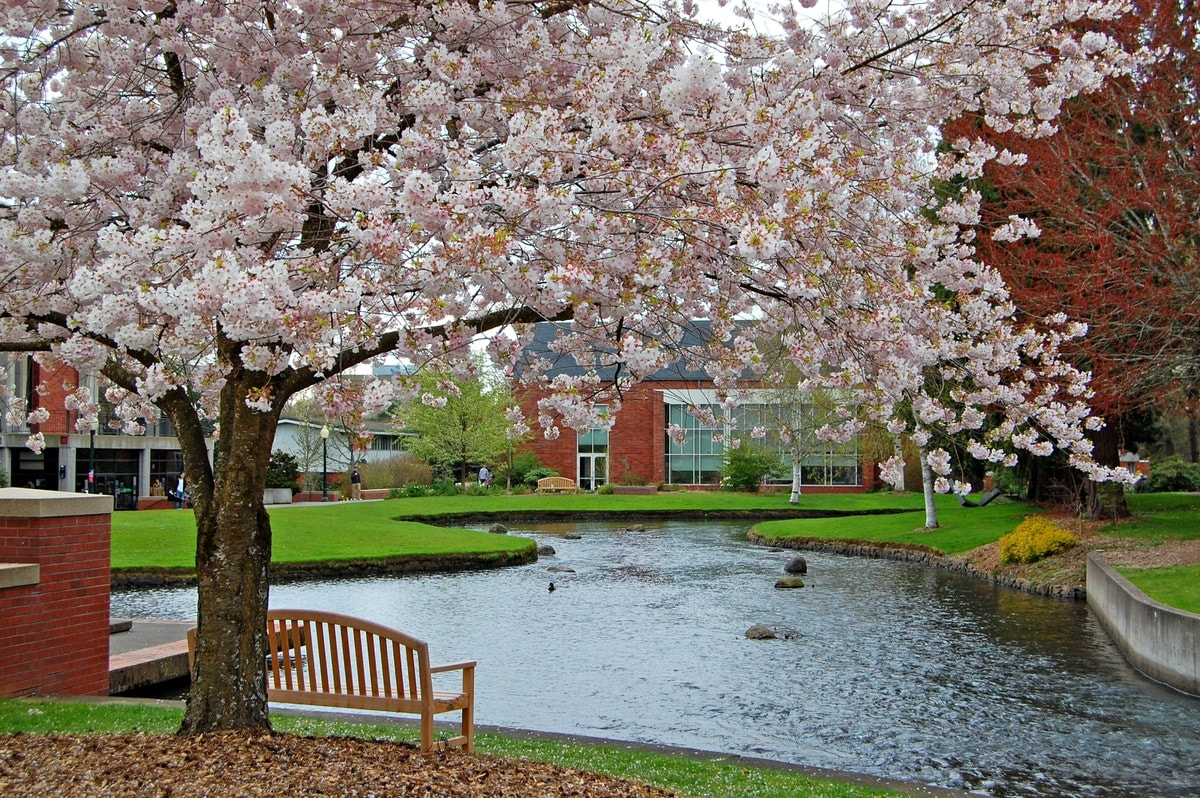
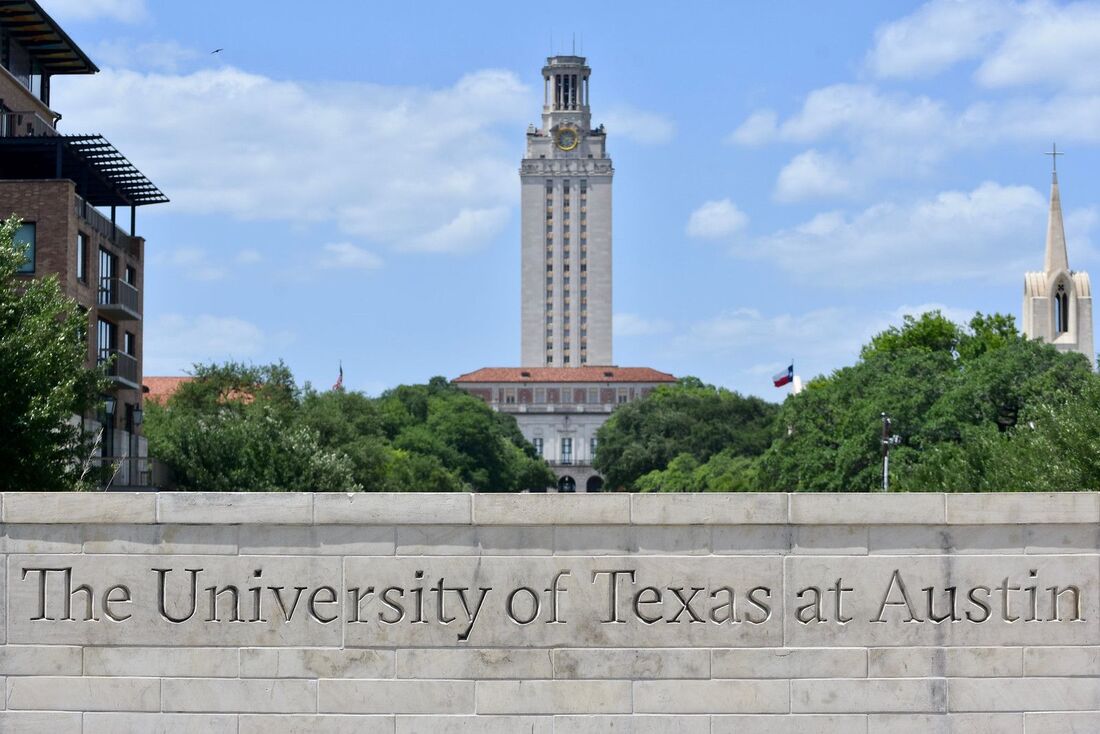
 RSS Feed
RSS Feed
